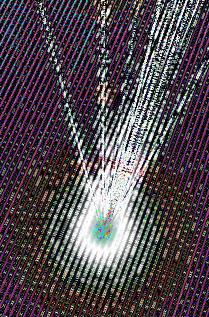Post-CMOS effect seen
 Australian researchers have observed an effect that could drive the next generation of superconductors.
Australian researchers have observed an effect that could drive the next generation of superconductors.
Researchers from the ARC Centre of Excellence in Future Low-Energy Electronics Technologies (FLEET) and RMIT University observed, for the first time, electric gate-controlled exchange-bias effect in van der Waals (vdW) heterostructures.
The finding offers a promising platform for future energy-efficient electronics that do not rely on traditional complementary metal-oxide-semiconductor (CMOS) chips.
The exchange-bias (EB) effect, which originates from interlayer magnetic coupling, has played a significant role in fundamental magnetics and spintronics since its discovery.
Spintronics, also known as spin electronics, is the study of the intrinsic spin of the electron. The spintronics field differs from traditional electronics in that, in addition to charge state, electron spins are exploited as a further degree of freedom, with implications in the efficiency of data storage and transfer, and quantum computing applications.
Although manipulating the EB effect by an electronic gate has been a significant goal in spintronics, until now, only very limited electrically-tunable EB effects have been demonstrated.
The electrical gate-manipulated EB effects should allow the creation of scalable energy-efficient spin-orbit logic, which is very promising for beyond-CMOS devices in future low-energy electronic technologies.
The ‘blocking’ temperature of the EB effect can be effectively tuned via an electric gate, which would allow the EB field to be turned ‘ON’ and ‘OFF’ as well in future spintronic transistors.
The FLEET-led collaboration of researchers at RMIT University (Australia) and South China University of Technology (China) confirm for the first time the electric control of EB effect in a vdW heterostructure.
The experiments should boost the development of vdW magnetic and spintronic devices and provide an ideal platform for exploring intrinsically interfacial magnetic coupling mechanisms.
More details are accessible here.







 Print
Print